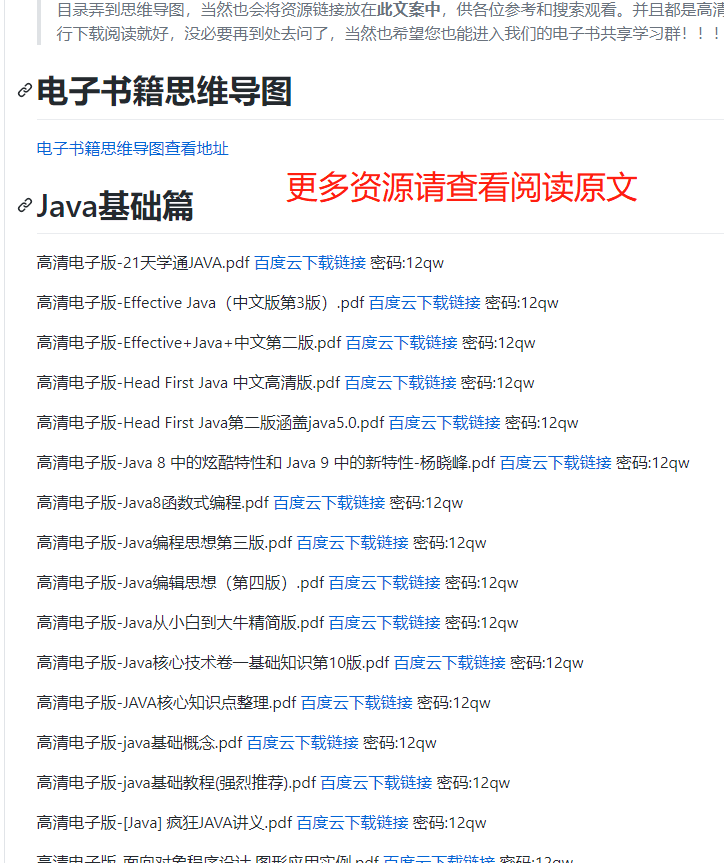使用 JWT 来保护你的 SpringBoot 应用
作者:freewolf
juejin.im/post/5902ca705c497d005829ed6f
关键词
Spring Boot、OAuth 2.0、JWT、Spring Security、SSO、UAA
写在前面
这几天有人问我Spring Boot结合Spring Security实现OAuth认证的问题,写了个Demo,顺便分享下。Spring 2之后就没再用过Java,主要是xml太麻烦,就投入了Node.js的怀抱,现在Java倒是好过之前很多,无论是执行效率还是其他什么。感谢Pivotal团队在Spring boot上的努力,感谢Josh Long,一个有意思的攻城狮。
我又搞Java也是为了去折腾微服务,因为目前看国内就Java程序猿最好找,虽然水平好的难找,但是至少能找到,不像其他编程语言,找个会世界上最好的编程语言PHP的人真的不易。
Spring Boot
有了Spring Boot这样的神器,可以很简单的使用强大的Spring框架。你需要关心的事儿只是创建应用,不必再配置了,“Just run!”,这可是Josh Long每次演讲必说的,他的另一句必须说的就是“make jar not war”,这意味着,不用太关心是Tomcat还是Jetty或者Undertow了。专心解决逻辑问题,这当然是个好事儿,部署简单了很多。
创建Spring Boot应用
有很多方法去创建Spring Boot项目,官方也推荐用:
Spring Boot在线项目创建
http://start.spring.io/
CLI 工具
https://docs.spring.io/spring-boot/docs/current/reference/html/cli-using-the-cli.html
start.spring.io可以方便选择你要用的组件,命令行工具当然也可以。目前Spring Boot已经到了1.53,我是懒得去更新依赖,继续用1.52版本。虽然阿里也有了中央库的国内版本不知道是否稳定。
搜索公纵号:MarkerHub,关注回复[ vue ]获取前后端入门教程!
如果你感兴趣,可以自己尝试下。你可以选Maven或者Gradle成为你项目的构建工具,Gradle优雅一些,使用了Groovy语言进行描述。
打开start.spring.io,创建的项目只需要一个Dependency,也就是Web,然后下载项目,用IntellJ IDEA打开。我的Java版本是1.8。
这里看下整个项目的pom.xml文件中的依赖部分:
<dependencies>
<dependency>
<groupId>org.springframework.boot</groupId>
<artifactId>spring-boot-starter-web</artifactId>
</dependency>
<dependency>
<groupId>org.springframework.boot</groupId>
<artifactId>spring-boot-starter-test</artifactId>
<scope>test</scope>
</dependency>
</dependencies>
所有Spring Boot相关的依赖都是以starter形式出现,这样你无需关心版本和相关的依赖,所以这样大大简化了开发过程。
当你在pom文件中集成了spring-boot-maven-plugin插件后你可以使用Maven相关的命令来run你的应用。例如mvn spring-boot:run,这样会启动一个嵌入式的Tomcat,并运行在8080端口,直接访问你当然会获得一个Whitelabel Error Page,这说明Tomcat已经启动了。
创建一个Web 应用
这还是一篇关于Web安全的文章,但是也得先有个简单的HTTP请求响应。我们先弄一个可以返回JSON的Controller。修改程序的入口文件:
@SpringBootApplication
@RestController
@EnableAutoConfiguration
public class DemoApplication {
// main函数,Spring Boot程序入口
public static void main(String[] args) {
SpringApplication.run(DemoApplication.class, args);
}
// 根目录映射 Get访问方式 直接返回一个字符串
@RequestMapping("/")
Map<String, String> hello() {
// 返回map会变成JSON key value方式
Map<String,String> map=new HashMap<String,String>();
map.put("content", "hello freewolf~");
return map;
}
}
这里我尽量的写清楚,让不了解Spring Security的人通过这个例子可以了解这个东西,很多人都觉得它很复杂,而投向了Apache Shiro,其实这个并不难懂。知道主要的处理流程,和这个流程中哪些类都起了哪些作用就好了。
Spring Boot对于开发人员最大的好处在于可以对Spring应用进行自动配置。Spring Boot会根据应用中声明的第三方依赖来自动配置Spring框架,而不需要进行显式的声明。
Spring Boot推荐采用基于Java注解的配置方式,而不是传统的XML。只需要在主配置 Java 类上添加@EnableAutoConfiguration注解就可以启用自动配置。Spring Boot的自动配置功能是没有侵入性的,只是作为一种基本的默认实现。
这个入口类我们添加@RestController和@EnableAutoConfiguration两个注解。@RestController注解相当于@ResponseBody和@Controller合在一起的作用。
run整个项目。访问http://localhost:8080/就能看到这个JSON的输出。使用Chrome浏览器可以装JSON Formatter这个插件,显示更PL一些。
{
"content": "hello freewolf~"
}
为了显示统一的JSON返回,这里建立一个JSONResult类进行,简单的处理。首先修改pom.xml,加入org.json相关依赖。
<dependency>
<groupId>org.json</groupId>
<artifactId>json</artifactId>
</dependency>
然后在我们的代码中加入一个新的类,里面只有一个结果集处理方法,因为只是个Demo,所有这里都放在一个文件中。这个类只是让返回的JSON结果变为三部分:
status - 返回状态码 0 代表正常返回,其他都是错误
message - 一般显示错误信息
result - 结果集
class JSONResult{
public static String fillResultString(Integer status, String message, Object result){
JSONObject jsonObject = new JSONObject(){{
put("status", status);
put("message", message);
put("result", result);
}};
return jsonObject.toString();
}
}
然后我们引入一个新的@RestController并返回一些简单的结果,后面我们将对这些内容进行访问控制,这里用到了上面的结果集处理类。这里多放两个方法,后面我们来测试权限和角色的验证用。
@RestController
class UserController {
// 路由映射到/users
@RequestMapping(value = "/users", produces="application/json;charset=UTF-8")
public String usersList() {
ArrayList<String> users = new ArrayList<String>(){{
add("freewolf");
add("tom");
add("jerry");
}};
return JSONResult.fillResultString(0, "", users);
}
@RequestMapping(value = "/hello", produces="application/json;charset=UTF-8")
public String hello() {
ArrayList<String> users = new ArrayList<String>(){{ add("hello"); }};
return JSONResult.fillResultString(0, "", users);
}
@RequestMapping(value = "/world", produces="application/json;charset=UTF-8")
public String world() {
ArrayList<String> users = new ArrayList<String>(){{ add("world"); }};
return JSONResult.fillResultString(0, "", users);
}
}
重新run这个文件,访问http://localhost:8080/users就看到了下面的结果:
{
"result": [
"freewolf",
"tom",
"jerry"
],
"message": "",
"status": 0
}
如果你细心,你会发现这里的JSON返回时,Chrome的格式化插件好像并没有识别?这是为什么呢?我们借助curl分别看一下我们写的两个方法的Header信息.
curl -I http://127.0.0.1:8080/
curl -I http://127.0.0.1:8080/users
可以看到第一个方法hello,由于返回值是Map,Spring已经有相关的机制自动处理成JSON:
Content-Type: application/json;charset=UTF-8
第二个方法usersList由于返回时String,由于是@RestControler已经含有了@ResponseBody也就是直接返回内容,并不模板。
所以就是:
Content-Type: text/plain;charset=UTF-8
那怎么才能让它变成JSON呢,其实也很简单只需要补充一下相关注解:
@RequestMapping(value = "/users", produces="application/json;charset=UTF-8")
这样就好了。
使用JWT保护你的Spring Boot应用
终于我们开始介绍正题,这里我们会对/users进行访问控制,先通过申请一个JWT(JSON Web Token读jot),然后通过这个访问/users,才能拿到数据。
关于JWT,出门奔向以下内容,这些不在本文讨论范围内:
https://tools.ietf.org/html/rfc7519
https://jwt.io/
JWT很大程度上还是个新技术,通过使用HMAC(Hash-based Message Authentication Code)计算信息摘要,也可以用RSA公私钥中的私钥进行签名。这个根据业务场景进行选择。
添加Spring Security
根据上文我们说过我们要对/users进行访问控制,让用户在/login进行登录并获得Token。这里我们需要将spring-boot-starter-security加入pom.xml。加入后,我们的Spring Boot项目将需要提供身份验证,相关的pom.xml如下:
<dependency>
<groupId>org.springframework.boot</groupId>
<artifactId>spring-boot-starter-security</artifactId>
</dependency>
<dependency>
<groupId>io.jsonwebtoken</groupId>
<artifactId>jjwt</artifactId>
<version>0.7.0</version>
</dependency>
至此我们之前所有的路由都需要身份验证。我们将引入一个安全设置类WebSecurityConfig,这个类需要从WebSecurityConfigurerAdapter类继承。
@Configuration
@EnableWebSecurity
class WebSecurityConfig extends WebSecurityConfigurerAdapter {
// 设置 HTTP 验证规则
@Override
protected void configure(HttpSecurity http) throws Exception {
// 关闭csrf验证
http.csrf().disable()
// 对请求进行认证
.authorizeRequests()
// 所有 / 的所有请求 都放行
.antMatchers("/").permitAll()
// 所有 /login 的POST请求 都放行
.antMatchers(HttpMethod.POST, "/login").permitAll()
// 权限检查
.antMatchers("/hello").hasAuthority("AUTH_WRITE")
// 角色检查
.antMatchers("/world").hasRole("ADMIN")
// 所有请求需要身份认证
.anyRequest().authenticated()
.and()
// 添加一个过滤器 所有访问 /login 的请求交给 JWTLoginFilter 来处理 这个类处理所有的JWT相关内容
.addFilterBefore(new JWTLoginFilter("/login", authenticationManager()),
UsernamePasswordAuthenticationFilter.class)
// 添加一个过滤器验证其他请求的Token是否合法
.addFilterBefore(new JWTAuthenticationFilter(),
UsernamePasswordAuthenticationFilter.class);
}
@Override
protected void configure(AuthenticationManagerBuilder auth) throws Exception {
// 使用自定义身份验证组件
auth.authenticationProvider(new CustomAuthenticationProvider());
}
}
先放两个基本类,一个负责存储用户名密码,另一个是一个权限类型,负责存储权限和角色。
class AccountCredentials {
private String username;
private String password;
public String getUsername() {
return username;
}
public void setUsername(String username) {
this.username = username;
}
public String getPassword() {
return password;
}
public void setPassword(String password) {
this.password = password;
}
}
class GrantedAuthorityImpl implements GrantedAuthority{
private String authority;
public GrantedAuthorityImpl(String authority) {
this.authority = authority;
}
public void setAuthority(String authority) {
this.authority = authority;
}
@Override
public String getAuthority() {
return this.authority;
}
}
在上面的安全设置类中,我们设置所有人都能访问/和POST方式访问/login,其他的任何路由都需要进行认证。然后将所有访问/login的请求,都交给JWTLoginFilter过滤器来处理。
稍后我们会创建这个过滤器和其他这里需要的JWTAuthenticationFilter和CustomAuthenticationProvider两个类。
先建立一个JWT生成,和验签的类
class TokenAuthenticationService {
static final long EXPIRATIONTIME = 432_000_000; // 5天
static final String SECRET = "P@ssw02d"; // JWT密码
static final String TOKEN_PREFIX = "Bearer"; // Token前缀
static final String HEADER_STRING = "Authorization";// 存放Token的Header Key
// JWT生成方法
static void addAuthentication(HttpServletResponse response, String username) {
// 生成JWT
String JWT = Jwts.builder()
// 保存权限(角色)
.claim("authorities", "ROLE_ADMIN,AUTH_WRITE")
// 用户名写入标题
.setSubject(username)
// 有效期设置
.setExpiration(new Date(System.currentTimeMillis() + EXPIRATIONTIME))
// 签名设置
.signWith(SignatureAlgorithm.HS512, SECRET)
.compact();
// 将 JWT 写入 body
try {
response.setContentType("application/json");
response.setStatus(HttpServletResponse.SC_OK);
response.getOutputStream().println(JSONResult.fillResultString(0, "", JWT));
} catch (IOException e) {
e.printStackTrace();
}
}
// JWT验证方法
static Authentication getAuthentication(HttpServletRequest request) {
// 从Header中拿到token
String token = request.getHeader(HEADER_STRING);
if (token != null) {
// 解析 Token
Claims claims = Jwts.parser()
// 验签
.setSigningKey(SECRET)
// 去掉 Bearer
.parseClaimsJws(token.replace(TOKEN_PREFIX, ""))
.getBody();
// 拿用户名
String user = claims.getSubject();
// 得到 权限(角色)
List<GrantedAuthority> authorities = AuthorityUtils.commaSeparatedStringToAuthorityList((String) claims.get("authorities"));
// 返回验证令牌
return user != null ?
new UsernamePasswordAuthenticationToken(user, null, authorities) :
null;
}
return null;
}
}
这个类就两个static方法,一个负责生成JWT,一个负责认证JWT最后生成验证令牌。注释已经写得很清楚了,这里不多说了。
下面来看自定义验证组件,这里简单写了,这个类就是提供密码验证功能,在实际使用时换成自己相应的验证逻辑,从数据库中取出、比对、赋予用户相应权限。
// 自定义身份认证验证组件
class CustomAuthenticationProvider implements AuthenticationProvider {
@Override
public Authentication authenticate(Authentication authentication) throws AuthenticationException {
// 获取认证的用户名 & 密码
String name = authentication.getName();
String password = authentication.getCredentials().toString();
// 认证逻辑
if (name.equals("admin") && password.equals("123456")) {
// 这里设置权限和角色
ArrayList<GrantedAuthority> authorities = new ArrayList<>();
authorities.add( new GrantedAuthorityImpl("ROLE_ADMIN") );
authorities.add( new GrantedAuthorityImpl("AUTH_WRITE") );
// 生成令牌
Authentication auth = new UsernamePasswordAuthenticationToken(name, password, authorities);
return auth;
}else {
throw new BadCredentialsException("密码错误~");
}
}
// 是否可以提供输入类型的认证服务
@Override
public boolean supports(Class<?> authentication) {
return authentication.equals(UsernamePasswordAuthenticationToken.class);
}
}
下面实现JWTLoginFilter 这个Filter比较简单,除了构造函数需要重写三个方法。
attemptAuthentication - 登录时需要验证时候调用
successfulAuthentication - 验证成功后调用
unsuccessfulAuthentication - 验证失败后调用,这里直接灌入500错误返回,由于同一JSON返回,HTTP就都返回200了
class JWTLoginFilter extends AbstractAuthenticationProcessingFilter {
public JWTLoginFilter(String url, AuthenticationManager authManager) {
super(new AntPathRequestMatcher(url));
setAuthenticationManager(authManager);
}
@Override
public Authentication attemptAuthentication(
HttpServletRequest req, HttpServletResponse res)
throws AuthenticationException, IOException, ServletException {
// JSON反序列化成 AccountCredentials
AccountCredentials creds = new ObjectMapper().readValue(req.getInputStream(), AccountCredentials.class);
// 返回一个验证令牌
return getAuthenticationManager().authenticate(
new UsernamePasswordAuthenticationToken(
creds.getUsername(),
creds.getPassword()
)
);
}
@Override
protected void successfulAuthentication(
HttpServletRequest req,
HttpServletResponse res, FilterChain chain,
Authentication auth) throws IOException, ServletException {
TokenAuthenticationService.addAuthentication(res, auth.getName());
}
@Override
protected void unsuccessfulAuthentication(HttpServletRequest request, HttpServletResponse response, AuthenticationException failed) throws IOException, ServletException {
response.setContentType("application/json");
response.setStatus(HttpServletResponse.SC_OK);
response.getOutputStream().println(JSONResult.fillResultString(500, "Internal Server Error!!!", JSONObject.NULL));
}
}
再完成最后一个类JWTAuthenticationFilter,这也是个拦截器,它拦截所有需要JWT的请求,然后调用TokenAuthenticationService类的静态方法去做JWT验证。
class JWTAuthenticationFilter extends GenericFilterBean {
@Override
public void doFilter(ServletRequest request,
ServletResponse response,
FilterChain filterChain)
throws IOException, ServletException {
Authentication authentication = TokenAuthenticationService
.getAuthentication((HttpServletRequest)request);
SecurityContextHolder.getContext()
.setAuthentication(authentication);
filterChain.doFilter(request,response);
}
}
现在代码就写完了,整个Spring Security结合JWT基本就差不多了,下面我们来测试下,并说下整体流程。扩展:图解JWT如何用于单点登录
开始测试,先运行整个项目,这里介绍下过程:
先程序启动 - main函数
注册验证组件 - WebSecurityConfig 类 configure(AuthenticationManagerBuilder auth)方法,这里我们注册了自定义验证组件
设置验证规则 - WebSecurityConfig 类 configure(HttpSecurity http)方法,这里设置了各种路由访问规则
初始化过滤组件 - JWTLoginFilter 和 JWTAuthenticationFilter 类会初始化
首先测试获取Token,这里使用CURL命令行工具来测试。
curl -H "Content-Type: application/json" -X POST -d '{"username":"admin","password":"123456"}' http://127.0.0.1:8080/login
结果:
{
"result": "eyJhbGciOiJIUzUxMiJ9.eyJhdXRob3JpdGllcyI6IlJPTEVfQURNSU4sQVVUSF9XUklURSIsInN1YiI6ImFkbWluIiwiZXhwIjoxNDkzNzgyMjQwfQ.HNfV1CU2CdAnBTH682C5-KOfr2P71xr9PYLaLpDVhOw8KWWSJ0lBo0BCq4LoNwsK_Y3-W3avgbJb0jW9FNYDRQ",
"message": "",
"status": 0
}
这里我们得到了相关的JWT,反Base64之后,就是下面的内容,标准JWT。
{"alg":"HS512"}{"authorities":"ROLE_ADMIN,AUTH_WRITE","sub":"admin","exp":1493782240}ͽ]BS`pS6~hCVH%
ܬ)֝ଖoE5р
整个过程如下:
拿到传入JSON,解析用户名密码 - JWTLoginFilter 类 attemptAuthentication 方法
自定义身份认证验证组件,进行身份认证 - CustomAuthenticationProvider 类 authenticate 方法
盐城成功 - JWTLoginFilter 类 successfulAuthentication 方法
生成JWT - TokenAuthenticationService 类 addAuthentication方法
再测试一个访问资源的:
curl -H "Content-Type: application/json" -H "Authorization: Bearer eyJhbGciOiJIUzUxMiJ9.eyJhdXRob3JpdGllcyI6IlJPTEVfQURNSU4sQVVUSF9XUklURSIsInN1YiI6ImFkbWluIiwiZXhwIjoxNDkzNzgyMjQwfQ.HNfV1CU2CdAnBTH682C5-KOfr2P71xr9PYLaLpDVhOw8KWWSJ0lBo0BCq4LoNwsK_Y3-W3avgbJb0jW9FNYDRQ" http://127.0.0.1:8080/users
结果:
{
"result":["freewolf","tom","jerry"],
"message":"",
"status":0
}
说明我们的Token生效可以正常访问。其他的结果您可以自己去测试。再回到处理流程:
接到请求进行拦截 - JWTAuthenticationFilter 中的方法
验证JWT - TokenAuthenticationService 类 getAuthentication 方法
访问Controller
这样本文的主要流程就结束了,本文主要介绍了,如何用Spring Security结合JWT保护你的Spring Boot应用。
如何使用Role和Authority,这里多说一句其实在Spring Security中,对于GrantedAuthority接口实现类来说是不区分是Role还是Authority,二者区别就是如果是hasAuthority判断,就是判断整个字符串,判断hasRole时,系统自动加上ROLE_到判断的Role字符串上,也就是说hasRole("CREATE")和hasAuthority('ROLE_CREATE')是相同的。利用这些可以搭建完整的RBAC体系。
本文到此,你已经会用了本文介绍的知识点。
代码
https://github.com/freew01f/securing-spring-boot-with-jwts
参考
https://docs.spring.io/spring-security/site/docs/current/reference/html/jc.html
http://ryanjbaxter.com/2015/01/06/securing-rest-apis-with-spring-boot/
http://www.ekiras.com/2015/01/spring-security-create-custom-authentication-filter-in-grails.html
https://auth0.com/blog/securing-spring-boot-with-jwts/
http://www.jwt.io/
END
顺便给大家推荐一个GitHub项目,这个 GitHub 整理了上千本常用技术PDF,绝大部分核心的技术书籍都可以在这里找到,
GitHub地址:https://github.com/javadevbooks/books
Gitee地址:https://gitee.com/javadevbooks/books
电子书已经更新好了,你们需要的可以自行下载了,记得点一个star,持续更新中..

